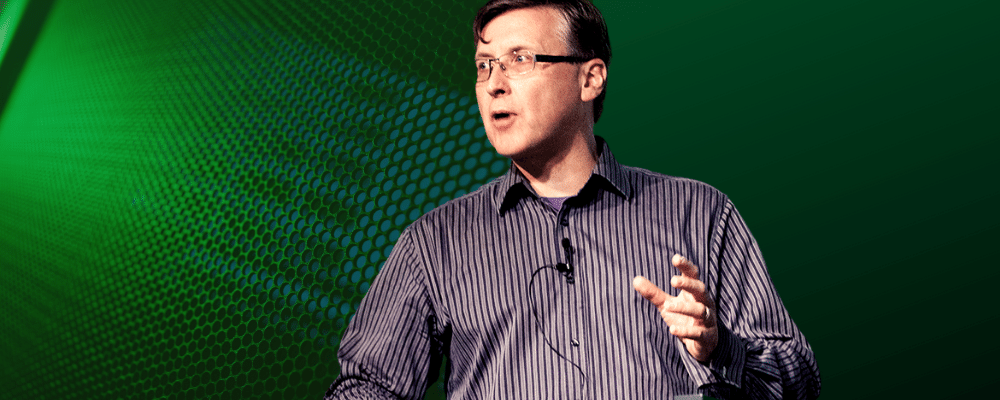
Decreasing ICT energy consumption – the power of data centres and people’s will - ICTFOOTPRINT.eu Webinar Report
TThe 9th in the series of ICTFOOTPRINT.eu webinars provided an informative overview on how to increase sustainability levels of data centres and how people in the workplace can really make a difference in terms of boosting sustainable ICT and reducing energy costs. In 10 years’ time, billions of IT internet-connected devices will produce 3.5% of global emissions within 10 years and 14% by 2040 (Source: Climate Home News) and, in 2025, it is expected that the communications industry will be responsible for 20% of all the world’s electricity (Source: The Guardian). It is imperative that innovative technologies are developed to decrease the amount of energy consumed by ICT.
Making green data centers with simplicity: Asperitas Immersed Computing technology
Sustainable data centres are part of Asperitas’s core mission. Michael Bouricius (Marketing Manager of Asperitas) highlights that the topic is huge. Innovation is needed to change data centers into green data centers.
Looking at any of the statistics available, a conservative estimate is that data centers are responsible for about a 4% chunk of world energy consumption and running green datacenters is a worldwide challenge. Along with sustainability, there are two further challenges that need to be met. One is technology-driven and relates to the need for advanced cloud and digital services and compute power. This, in turn, brings a challenge in terms of the infrastructure, power and connectivity related to the scalability of this demand. Usually solutions geared towards sustainability often present compromise, usually in terms of complexity of the system. Asperitas’s new immerged computing technology stands out for its simplicity.
So, what is immersed computing all about? Generally, data centres use air to chill both the systems and the buildings themselves. Immersed computing use liquid in its place. In Asperitas’s technology, the hardware is completely immersed in dielectric liquid mineral oil. The oil captures the heat much more efficiently from the chips and takes it from there to places much farther than that offered by traditional technology. And the water heated to a temperature of 50 degrees or more, resulting as a by-product also promises great potential for exploitation.
The box in which the hardware is placed has no moving parts, such as ventilators inside the system, or pumps to circulate the liquid, which is obtained by natural convection. Put simply, the chips heat the mineral oil, the hot oil moves to the surface and is cooled with water chilled heat exchanges on each side of the system and the chilled oil then moves down to the bottom again. It is the IT that runs the circulation of the solution itself. All the serviceable parts are above liquid and just 3 connections are needed water, power and connectivity for data. The set-up can facilitate a high demand of IT performance. In a redundant set up each unit can facilitate up to 22 kW. For lower density solutions, 30kW of power are produced.
Further, sustainability of the system is guaranteed through circularity agreements, that is a set of agreements already in place with suppliers as to the end-of-life solution for the products used. From the metal, to the plastic, to the oil. Plus, these data centers employ a minimum use of materials, and on the energy side a saving of 50% of the footprint compared to traditional air-cooled centres can be made.
Also, the system can be run anywhere it is needed for high-density purposes with less floor space. Michael presented a use case which involved deployment of the immersed systems within a traditional air-chilled data centre in Eidenhoven. The immersed technology added two rows of ten systems for a total of 300 kW on a floor space of less than 35 square metres. When compared to the traditional system, the same amount of IT performance in the same floor space added almost another half a megawatt per square meter, with only 10 % of the cooling capacity. The next step would be to re-use the warm water, and in this case, no active cooling would be required at all.
Questions from the public included the necessary investment when compared to a traditional system. Michael was pleased to report that the impact on the cost is 50% energy reduction but at only 10% of the cost of traditional investment. Michael added that one of their customers reported 15% less in maintenance costs on a yearly scale.
START2ACT – Decreasing ICT energy consumption thanks to people’s will
Daniel Frohnmaier is a Project Coordinator at Geonrardo environmental technologies, a company active in the energy, environment and sustainable energy field and coordinator of the START2ACT project.
His presentation “Engaging businesses in sustainable technology: the human factor” looked at the human side of sustainability. ICT has a huge share of global electricity usage. The study referenced projected usage at 50% in 2030 in the worst case and 20% in the expected case, equal to 1/5th of world electricity consumption.
The ICT sector and systems are becoming ever more complex and more transparency needs to be achieved between the different levels, how they communicate and how they logically interact with each other to be able to design for more energy efficient operation. In the end, the saying that a machine is only as efficient as its operator is true even though this is becoming less so with smart tools.
START2ACT is an EU funded project under the Horizon 2020 framework programme. The mission is to increase ICT efficiency on ICT and office equipment in young SMEs and start-ups. Scientific background studies have shown that it is possible, through behavioural change only to reduce energy consumption by 20%. ICT and office equipment are focused on in the project, as this is the fastest growing energy using sector, and SMEs as, not only are they the backbone of the ecosystem, but only 2/3 have rules or devices for energy savings in place.
The methods adopted over the three-year lifetime of the project are aimed at actively supporting SMEs and start-ups in 9 European countries. This is carried out through on-site consultancy and mentoring programmes, as well as online resources. A monitoring scheme is also in place that is administered to the participants of the on-site training sessions and the feedback from these surveys helps not only improve performance but also put forward relevant findings.
When a business wants to bring forward a proposal to reduce energy consumption in their company, this can often be effectively achieved, and it is advised to achieve this, by stimulating norms in a company to declare corporate commitment to energy/environmental efficiency. The content of the corporate commitment should mostly contain objectives and goals, quantitative targets, share commitment on corporate agreements (such as standards, or statements from the European Commission). It should also detail how the company will support this strategy and, on the other hand, how employees can also support the strategy to bring the company forward. It can be decided whether to publish the document internally, or externally. When published externally, it can be a powerful marketing tool.
About norms for the studies carried out on the companies, it was shown that people already considered that they had a role to play in the company to save energy. When asked if it was a company norm to save energy there was also agreement, although this was not as strong. So how do we involve employees? The community aspect is important. This is important for managers or team leaders to recognize as it is a way of involving employees in the project.
Apparently, people find it important to share objectives with their colleagues, so obviously a community aspect comes into play. People see the influence that they have. There is also evidence that it is not only the economic aspects that are important, but also the environmental, social and justice reasons which may even weigh more. This is basically because if a person acts pro-environmentally they perceive themselves as eco-friendly which in turn generates a feeling of wellbeing.
Daniel went on to present the portfolio of the project which includes on-site support to young SMEs and Start ups, the mentoring of start-ups through partnerships with incubators and accelerators and business breakfasts with young SMEs (now over in most countries).
The Project has also incorporated on-line tools such as e-learning, a START2ACT challenge run on social networks and a forum where interested parties could interact with the community and ask for advice from experts. Finally, as part of its online presence, the Project has developed a knowledge tree with tailored information.




 © 2018 ICTFOOTPRINT.eu – ICTFOOTPRINT.eu has received funding from the European Commission’s Horizon 2020 research and innovation programme under the Grant Agreement no 690911. The content of this website does not represent the opinion of the European Commission, and the European Commission is not responsible for any use that might be made of such content.
© 2018 ICTFOOTPRINT.eu – ICTFOOTPRINT.eu has received funding from the European Commission’s Horizon 2020 research and innovation programme under the Grant Agreement no 690911. The content of this website does not represent the opinion of the European Commission, and the European Commission is not responsible for any use that might be made of such content.